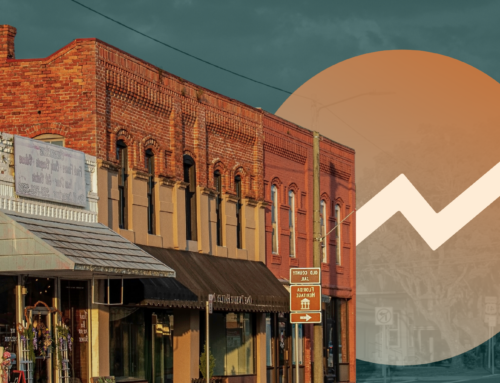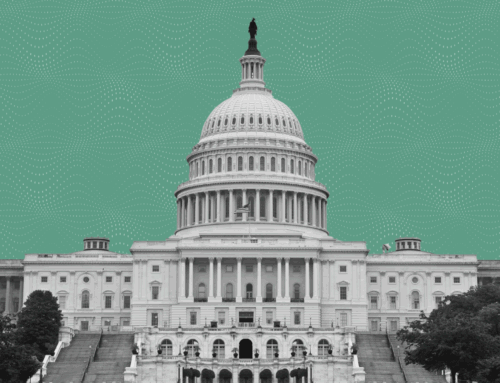Today, the Economic Innovation Group (EIG) released a new report revealing how unprecedented demographic challenges are impacting regional economies through the housing market, local government finances, and depressed rates of business dynamism. “From Managing Decline to Building the Future,” authored by Adam Ozimek of Moody’s Analytics and EIG’s Kenan Fikri and John Lettieri, documents how population loss is not just a symptom of economic challenges in many communities, but also a direct cause — one that deserves urgent attention from policymakers. The authors propose a new type of place-based policy — the “Heartland Visa” — as an innovative solution for connecting skilled immigrants to welcoming communities impacted by demographic trends and underserved by current immigration policy.
Moody’s Senior Economist Adam Ozimek said, “The U.S. is facing serious demographic challenges, and this disproportionately affects economically struggling places. Economists and policymakers need to understand that these demographic problems are not merely an outcome of socioeconomic problems: they are also a cause. A shrinking and rapidly aging population has negative economic consequences for housing markets, fiscal coffers, and dynamism.”
In spite of major demographic challenges facing much of the country, there are reasons for optimism. Counties with shrinking or stagnating populations still account for 11 percent of GDP – nearly equivalent to the national output of Canada. Many cities impacted by these trends still retain strong economic foundations and significant untapped potential. The Heartland Visa would provide a catalyst to places contending with demographic headwinds. Under such a program, eligible communities would “opt-in,” and visa-holders would live and work in the eligible region of their choice without being tied to a specific employer. During that time they would build social networks and put down roots in their host communities as an on-ramp towards permanent residency and full labor mobility.
“Our immigration policy should address the urgent needs and support the extraordinary potential of a broader swath of American communities,” said EIG President and CEO John Lettieri. “As policymakers consider ways to fix the broken immigration system, place-based policy should be part of the equation. The Heartland Visa would leverage one of our nation’s greatest advantages — the ability to attract skilled and entrepreneurial people from around the world — to support the economic vitality of small and mid-sized communities and improve opportunities for local residents.”
Local leaders understand the need for new tools to help address regional demographic trends and unlock the full potential of their communities.
“Countering the impact of population loss on heartland communities is critical for any serious policy discussion about reducing inequality in our country,” said Mayor Nan Whaley of Dayton, OH. ”Solutions like place-based visas and other policies that encourage skilled immigration to the middle of the country deserve attention from our federal policymakers.”
Mayor Quentin Hart of Waterloo, IA, added, “The face of the heartland is progressively changing. It’s imperative that we find creative new ways to meet the demands of attracting a highly skilled and diverse workforce. Whether it’s attracting new immigrants or upscaling current skill levels, Waterloo has to keep open the doors of access, inclusion and opportunity.”
“Like many Midwest cities, Akron has had to adjust local policies, economic development tactics and industry focuses in order to compete in the ever-changing global marketplace,” said Mayor Dan Horrigan of Akron, OH. “Reversing population loss and spurring meaningful economic investment in our community are the most important ways in which we can address economic, social and educational disparities in our City. Strategic and focused federal policies to help the heartland, and cities like Akron, obtain this goal will go a long way in stabilizing and growing our communities.”
Key findings from the report include:
- U.S. population growth has fallen to 80-year lows. The country now adds approximately 900,000 fewer people each year than it did in the early 2000s. The last decade marks the first time in the past century that the United States has experienced low population growth and low prime working age growth on a sustained basis at the same time.
- Uneven population growth is leaving more places behind. 86% of counties now grow more slowly than the nation as a whole, up from 64% in the 1990s.
- In total, 61 million Americans live in counties with stagnant or shrinking populations and 38 million live in the 41% of U.S. counties experiencing rates of demographic decline similar to Japan’s.
- 80% of U.S. counties, home to 149 million Americans, lost prime working age adults from 2007 to 2017, and 65% will again over the next decade.
- By 2037, two-thirds of U.S. counties will contain fewer prime working age adults than they did in 1997, even though the country will add 24.1 million prime working age adults and 98.8 million people in total over that same period.
- Population decline affects communities in every state. Half of U.S. states lost prime working age adults from 2007-2017. 43% of counties in the average state lost population in that same time period, and 76% lost prime working age adults.
- Shrinking places are also aging the most rapidly. By 2027, 26% of the population in the fastest shrinking counties will be 65 and older compared to 20% nationwide.
- Population loss is hitting many places with already weak socioeconomic foundations. The share of the adult population with at least a bachelor’s degree in the bottom decile of population loss is half that in the top decile of population growth. Educational attainment in the fastest shrinking counties is on average equivalent to that of Mexico today or the United States in 1978.
- Population loss itself perpetuates economic decline. Its deleterious effects on housing markets, local government finances, productivity, and dynamism make it harder for communities to bounce back. For example, this analysis found that a 1 percentage point decline in a county’s population growth rate is associated with a 2-3 percentage point decline in its startup rate over the past decade.
Supporting Resources
You can read The New York Times feature about the report here and the full report and additional assets at eig.org/heartland-visa. EIG welcomes press, bloggers, policymakers, think tanks, and other interested parties to use and reference our research with attribution, such as “Source: Economic Innovation Group, From Managing Decline to Building the Future, 2019”
About the Economic Innovation Group (EIG)
The Economic Innovation Group (EIG) is an ideas laboratory and advocacy organization whose mission is to advance solutions that empower entrepreneurs and investors to forge a more dynamic American economy. Headquartered in Washington, D.C. and led by an experienced, bipartisan team, EIG convenes leading experts from the public and private sectors, develops original policy research, and works to advance creative legislative proposals that will bring new jobs, investment, and economic growth to communities across the nation. For more information, visit eig.org.





